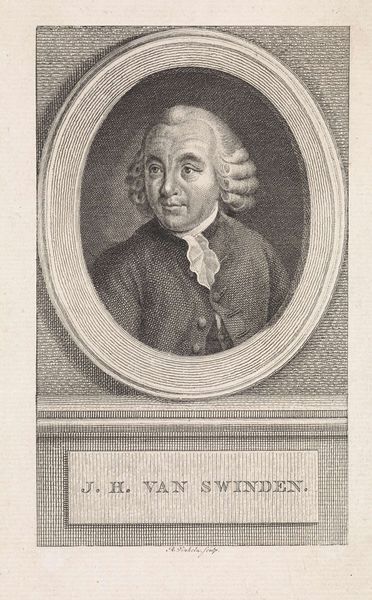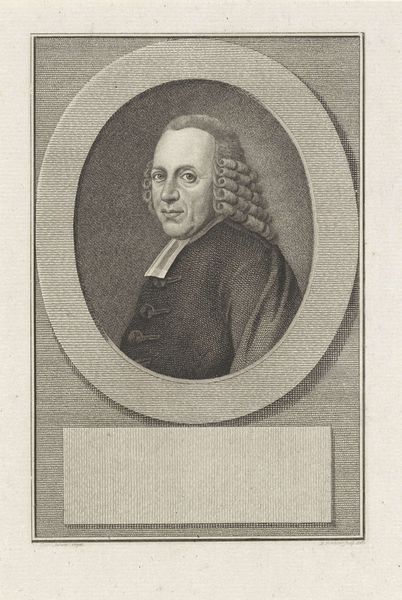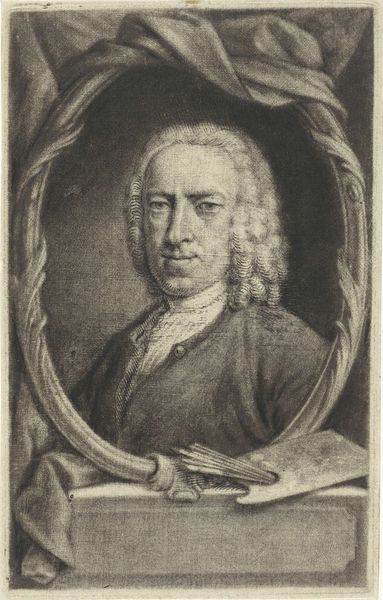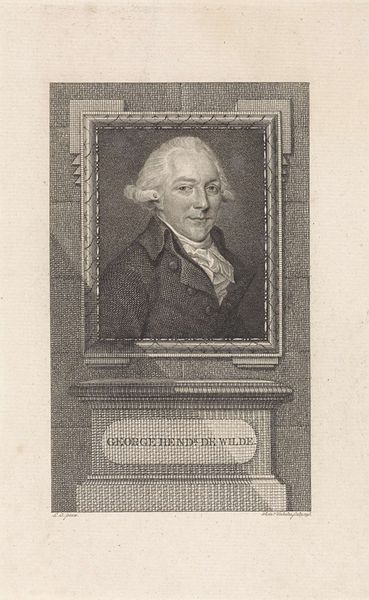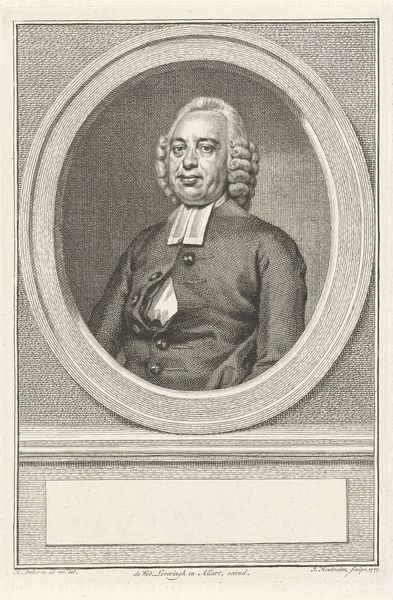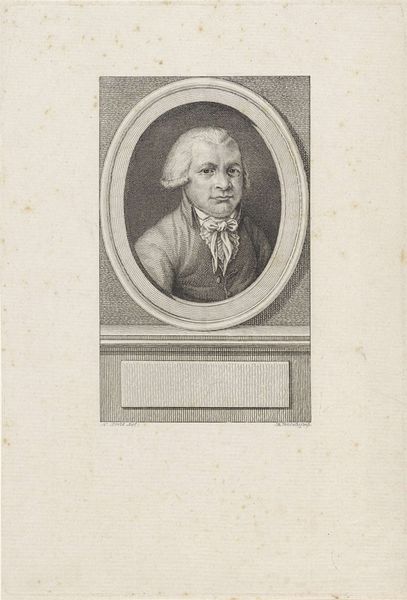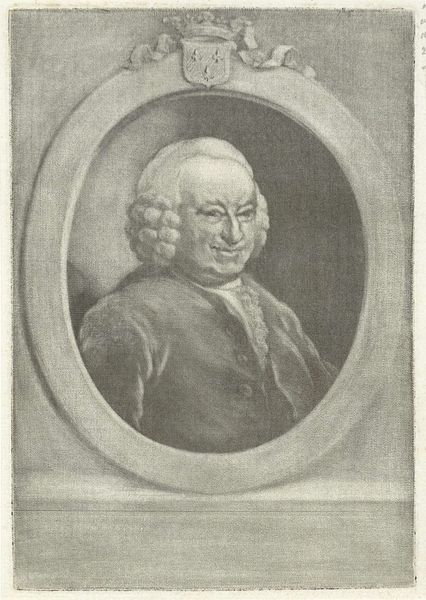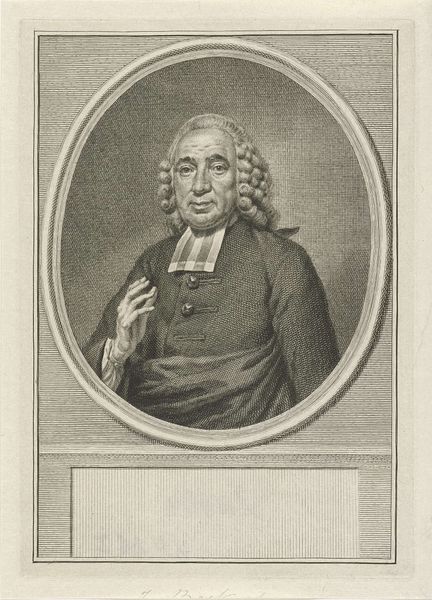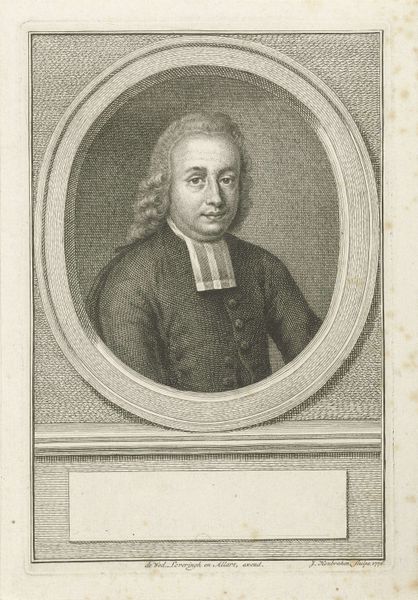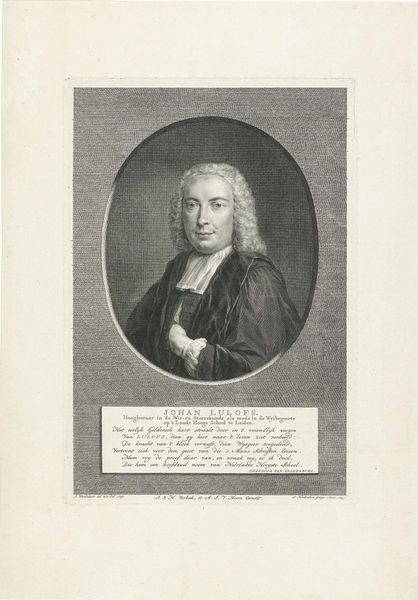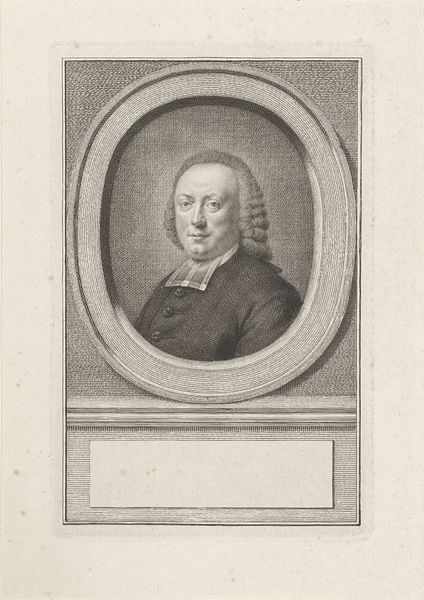
drawing, print, paper, engraving
#
portrait
#
drawing
#
neoclacissism
# print
#
paper
#
history-painting
#
engraving
Dimensions: height 169 mm, width 108 mm
Copyright: Rijks Museum: Open Domain
Curator: Here we have Reinier Vinkeles's 1784 engraving, "Portret van Engelbertus Matthias Engelberts," housed here at the Rijksmuseum. It's a fascinating piece from the late 18th century. Editor: It strikes me immediately as rather austere, despite the ornamental frame. The profile view, the severe gaze... very formal. Curator: Indeed. It’s Neoclassical in style, embracing clarity, order and a return to classical ideals. This print would have been produced using an engraving, where the image is incised into a plate and then printed onto paper. Editor: So, in considering materials, what does this print on paper tell us about accessibility and distribution of images at the time? This wasn’t a unique painted portrait for a single patron; it’s a reproducible image. Curator: Precisely. Engravings democratized portraiture. More broadly, the symbolic significance of Engelbertus Matthias Engelberts himself, a theologian, should be understood. The era valued reason and intellectual pursuits, ideas which he clearly embodies. Editor: He's presented as an emblem of Enlightenment ideals, certainly. It's also intriguing how the frame and lettering below create a visual anchor. Text functioning as imagery. What emotions were such visual portraits meant to invoke? Curator: Perhaps reverence, respect, a sense of intellectual authority. The consistent linework creates an aesthetic tied to logic. This period looked back at Roman portraiture and sought that feeling of wisdom through accurate representation. Editor: Right, the consistent use of lines emphasizes that desire. Although somewhat static from our contemporary perspective, the clarity that Vinkeles achieves offers a very precise, very constructed vision of 18th century societal values. Curator: Vinkeles manages to depict a specific individual while simultaneously adhering to broader cultural values of the time. A beautiful example of how prints became vital tools for the spread of ideas. Editor: And also a stark reminder that visual culture and the act of creation are rooted in a material world and that that world informs how, even now, we regard the image. Curator: It really demonstrates the connection between imagery, material culture and broader social trends of the 18th century. Thanks for providing your insight on the piece.
Comments
No comments
Be the first to comment and join the conversation on the ultimate creative platform.
